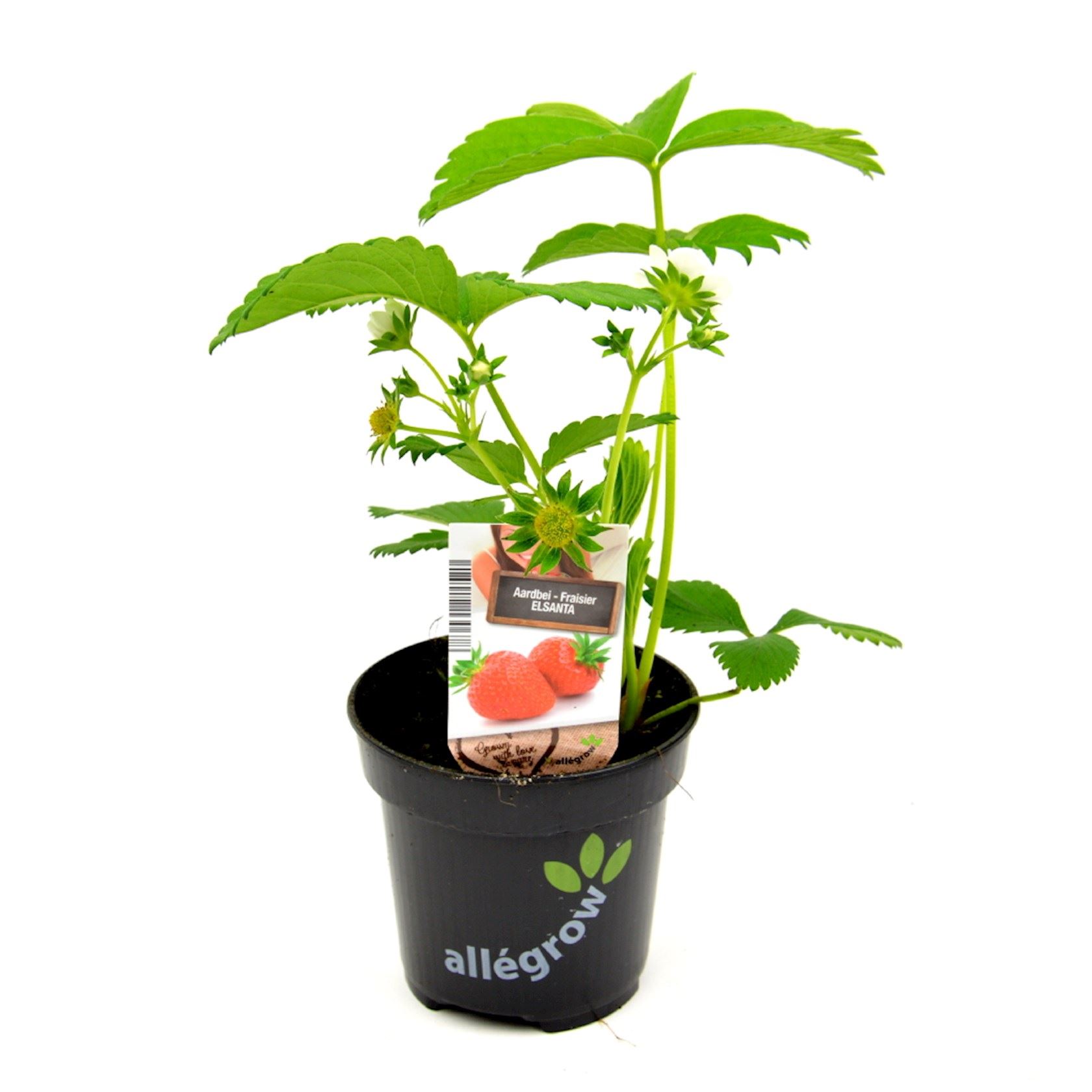Strawberry Elsanta - pot ø10.5 cm (Fragaria x ananassa 'Elsanta')
Aardbei Elsanta
Product information "Strawberry Elsanta - pot ø10.5 cm (Fragaria x ananassa 'Elsanta')"
Elsanta is the variety that is fairly commonly used by professional gardeners. A top variety but not the easiest.
Elsanta has firm and juicy strawberries with a fairly strong aroma and a good taste. The strawberries have a long shelf life.
Elsanta is an upright plant type with a very high production, good firmness and a long shelf life. Elsanta can be used for all kinds of cultivation, both inside and outside, but is difficult to force.
Productivity is very high, as is the percentage of first quality strawberries. Elsanta is little susceptible to fruit rot, fairly susceptible to stem base rot, susceptible to powdery mildew, red root rot and black fruit rot, and very susceptible to wilt (verticilium).
PLANTING:
Strawberries are best planted until mid-August, August 20 at the latest. Because they still need a good growth period in autumn to make flowers internally. Especially if the plants are a bit thinner, it is important to plant out around August 15 at the latest. Planting too late will result in fewer flowers in spring.
Strawberries are only replanted on the same piece of land every four, better five years. Especially the varieties that are susceptible to root diseases. Since strawberries in general are quite susceptible to verticilium (wilt), it is better not to plant them in a plot that has had potatoes or leguminous plants.
CULTIVATION TIPS:
Strawberries grow best in soils that hold water well in the spring and early summer. On the other hand, there should be no waterlogging in the winter. It is therefore advisable to plant strawberries on a slightly raised bed, so that there is certainly no water retention during the winter.
If you have a light soil (sandy soil), you won't have problems with waterlogging in winter, but you will have problems with drought in spring. Especially strawberry plants whose fruits are growing require sufficient water. A slightly heavier soil (loam, silt) is ideal for strawberries, as long as there is no stagnation of water at the plants in winter.
It is ideal to prepare the soil about four weeks before planting. This allows the fertilizer to spread and the soil is settled enough to cover it with a foil or sheet. It is best to place the foil or sheet when the soil is sufficiently moist.
Strawberries do not like a lot of nitrogen. The type of fertilizer is also important. Using mineral fertilizer just before planting is dangerous for root burn. It is best to use organic commercial fertilizers with a high potassium content and little nitrogen, for example 130 g/m² 6-5-10. Farmyard manure is given to the pre-crop, i.e. in early spring at the latest. Well-digested compost can be used before planting. Strawberries prefer a slightly lower acidity of the soil.
Strawberries grow better if you can plant them on a soil cover. This can be a black foil, but even better is a root canvas that is water permeable.
Plant the plants in the row 25 cm, the rows at 70 cm and not too deep. Planting too deep causes poor growth, as does planting too shallow.
The plants are well pressed and watered after planting. Especially during the first few days water them regularly. After that they are wetted daily and in sunny weather several times a day.
After planting, sometimes a few offshoots appear, these are removed. Finally, even in September it can sometimes still be dry. Give then also still some water. It is important that the growth in the plants remains so that they can continue undisturbed with the internal flower formation.
Remove the offshoots in September so that all energy can go to the mother plant at that time
Product specifications
| Application / use plant: | Unknown - n/a |
|---|---|
| Average number per m²: | 7 |
| Bloom Month: | May, June |
| Bloom color: | White |
| Branches / bark: | Unknown - n/a |
| Dutch plant name: | Middelvroege aardbei |
| Flower color - details: | White |
| Frost hardiness - details: | Very good (-29 till -23°c), usda zone 5 |
| Frost resistance: | Extrême winter hardiness |
| Fruit: | Berry-shaped, Red |
| Fruit - details: | Red, edible |
| Full grown plant height: | 20-30 cm |
| Growth habit : | Ground cover |
| Growth habit - details: | Clumping, forms tendrils with new plant after fruiting |
| Humidity/Soil: | Normal soil |
| Latin plant family: | Rosaceae |
| Leaf / Foliage: | Green |
| Leaf / foliage - details: | Deciduous, green |
| Location: | Halfshadow, Full sun |
| Location - details: | Preferably full sun |
| Maturity: | June |
| Minimum growing height (in cm): | 20 |
| Plant characteristic: | Ground cover, Fruit-bearing |
| Plant family: | Rose family |
| Planting distance: | 5-8 pieces per m² (35-45 cm apart) |
| Pruning period: | March, September |
| Taste: | Sweet and juicy |
| Width mature plant: | 30-40 cm |
| Winter foliage: | Losing leaf |
| maximal growth height (in cm): | 30 |
| type of crop: | Perennial plant |
| type of soil: | Calcareous soil, Clay soil (calcareous), Normal soil, Peaty soil (acidic) |
| type of soil / ground - details: | Any good garden soil |
Pictures of this plant
Reviews
Login













